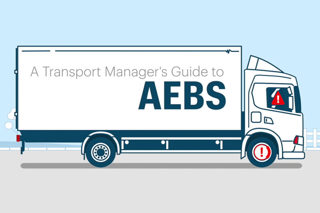Collisions on motorways involving foreign lorries have increased by 14% since 2012, Accident Exchange statistics have revealed.
Lorries from Poland and Germany were found to be the most accident-prone by some margin; Polish lorries represented 15.7% of accidents, while German vehicles followed with 13.1% of lorry collisions. HGVs from Spain were involved in 6.1% of incidents.
Unsurprisingly perhaps, the M25 saw more foreign lorry accidents than any other road in the UK, followed by the M6 and the M1. City and town centre locations represented over a third of accidents.
The Accident Exchange figures indicate that nearly 1,100 crashes involving foreign lorries took place on the UK’s motorway network in 2014; an increase of 14.3% since 2012.
Across all road types, estimates put the number of foreign lorry incidents at 3,100 – or nearly nine per day.
Usually considered the safest roads to travel on by car, a third of all foreign lorry accidents occur on motorways. Typically, just 4.3% of accidents take place on motorways.
Liz Fisher, director of sales development at Accident Exchange, said: “This worrying statistic shows that a collision with a foreign lorry is an increasingly real possibility.
“A heavy goods vehicle in unfamiliar territory can be a danger.
“Common types of accidents that might involve trucks are cars getting caught in the blind spot of a lorry that is changing lanes or cars being rear-ended by a much bigger, heavier vehicle.
“Both are equally as dangerous and we urge all motorists to drive with safety and vigilance in mind at all times.
“While safety is the paramount concern, getting involved in an accident with a vehicle from abroad can also lead to frustrating and difficult administrative complications.”
Accident Exchange handled 110,000 collisions between 2012 and 2014 and found that the proportion of accidents involving foreign lorries on the motorway had increased to more than 1%.






















Gary Dawson - 07/05/2015 13:42
What are these statistics telling us? Are these drivers under trained, are they on tight time restraints causing them to make rushed decisions? More importantly what is to be done to tackle the matter on the UK roads, before the incidents increase? How do these statistics compare with UK drivers, have we had decreasing driver volumes due to foreign transport import and export? Which ever the answers the most important step would be to localise the incident trends and work on solutions to prevent them from occurring before lives are lost.